How is a historian like a detective?
For upon |Historians and detectives both record events from the past and find out, how,when,who did it and why it happened. They both go to the scene and collect evidence that could be useful and help them find out what happened.they both study the evidence up close for dna that could be useful to help find out the mystery or problem.
The article was originally published here.
Historians are Detectives
Grade Range: 3-5
Resource Type(s): Primary Sources, Lessons & Activities
Duration: 50 minutes
Date Posted: 11/19/2008
In the classroom activity, students will be able to explain the difference between primary and secondary sources, and explain how the value of using primary sources is important to history. By using primary sources to answer a series of questions, they will see that, much like detectives, historians have to prove that their answers are correct by providing evidence. This activity is included in the online exhibition from the Smithsonian’s National Museum of American History entitled The Star-Spangled Banner: The Flag that Inspired the National Anthem.
National Standards
Historical Thinking Standards (Grades K-4)
Standards in History (Grades K-4)
United States History Standards (Grades 5-12)
Historical Thinking Standards (Grades 5-12)
Standards For English Language Arts (Grades K-12)
Common Core State Standards (Grades K-12)
Common Core State Standards (Grades 6-8)
Instructional Strategies
The article was originally published here.
he Historian as Detective: An Introduction to Historical Methodology
Michael J. Arrato Gavrish
In his novel 1984, George Orwell warns that “He who controls the present controls the past, he who controls the past controls the future” (Orwell 1949). The freedom to discover and debate the past is an essential component of a democratic society where free-thinking individuals are to be valued. Yet many students hold too tightly to an authoritarian idea: that history consists simply of what textbooks or encyclopedias present as fact. It is important for students to obtain a better understanding of the kind of dilemma faced by historians as they grapple with the question of what really happened in the past.
The classroom lesson in historical methodology presented here attempts to show secondary students how dedicated historians search for what happened in the past. After creating the curriculum project for my U.S. history classes, I named the unit “The Historian as Detective,” a title inspired by the book of that name written and edited by Robin Winks. Winks states, “The historian must collect, interpret, and then explain his evidence, by methods which are not greatly different from those techniques employed by the detective, or at least the detective of fiction” (Winks 1969). I agree with Winks’ suggestion that a historian is more like a detective than a scientist.
My initial presentation includes seven mini-activities, which I introduce dressed up as Inspector Gavrish, accompanied by the theme from The Pink Panther. In each mini-activity, I focus on a specific aspect of the process that real historians must go through. My overall goal is to try to get my students to think more critically about the written history that they study. I offer some ideas and comments, as well as appropriate quotes, but I want the students to do most of the investigating, explaining, and discussing.
Section I
“History is the memory of things said and done.” -Carl Becker
In this activity, I tape three diagrams on the chalkboard. Each diagram consists of two different shapes and colors. After a few minutes, to the surprise of my students, I proceed to destroy the diagrams. Worksheets are then passed out, and the students are asked to try to remember what the diagrams were. After they share their frustrations with me, I stress to them that historical events cannot be replayed for the historian’s pleasure. The historian must sometimes rely on poor eyewitness accounts. The purpose of this first section is to suggest that history is reconstructed from traces of the past.
In Diagram A:
- What shape is the outer figure?
- What is its color?
- What shape is the inner figure?
- What is its color?
In Diagram B:
- What shape is the outer figure?
- What is its color?
- What shape is the inner figure?
- What is its color?
In Diagram C:
- What shape is the outer figure?
- What is its color?
- What shape is the inner figure?
- What is its color?
Section II
“Unlike a good steak, good history should always be well done.”
-Michael Arrato Gavrish
In this activity students are asked to come up with sources of information with which to answer some basic questions about their first few childhood years. They usually have no trouble coming up with numerous sources of information. It is made clear that their examples, such as parents, a baby book, hospital records, etc., are considered primary sources. It is then pointed out that a biography, magazine articles, encyclopedia, etc., would be classified as secondary sources. The students are told that good historians work mostly with primary sources, even though this may take more time and effort. The aim of this section is to distinguish between primary and secondary sources.
What are some sources of information that would help you answer the following groups of questions?
Group A
- What is your date of birth?
- How much did you weigh at birth?
- What was your hair color at birth?
Group B
- When did you take your first step?
- When did you say your first word?
- When did you draw your first picture?
Group C
- Were you a very sick child?
- Were you a very smart child?
- Were you a very happy child?
Section III
“Entirely faithful testimony is not the rule but the exception.”
-Thomas Spencer Jerome
A situation is presented to the class in which a teacher has accused a pupil named Bob of cheating on a test and begins to question some of the other class members regarding the alleged cheating incident. The students are challenged to name which of the pupils in Bob’s class would be most trustworthy and which would be least trustworthy. In discussions with the students in the class, problems of bias and of finding a genuine eyewitness are highlighted. Pointing out the difficulty of finding reliable witnesses is the goal of this section.
Which of the following people do you think would most likely tell the truth about Bob cheating on a test?
Which of the following people do you think would least likely tell the truth about Bob cheating on a test?
Bob: sits in the back of the room
Sally: sits in the front of the room; likes Bob very much
Cindy: sits next to Bob in the back
Jeff: sits next to Bob in the back; dislikes Bob greatly
Allen: sits in the middle of the room
Section IV
“History is only a confused heap of facts.” -Lord Chesterfield
In this activity the students are shown three physical objects and asked to define what they are, or even more important, what they might be thought to be. Objects that I have used include a slide rule, egg separator, etc.; other teachers, however, might want to explore a flea market for some old gadgets. There are always very imaginative students who suggest interesting names and purposes for the selected objects. I advise them that even material evidence is not always used by historians without their needing to undertake further investigation and creative thinking about the evidence. The purpose of this section is to demonstrate that historical physical evidence can proffer challenges too.
What are the following objects in today’s world?
Item AItem BItem C
What might these objects be thought to have been if discovered in the year 2500?
Item AItem BItem C
Section V
“Forgery is in fact one of the oldest and commonest offences [sic].”
-Allan Nevins
This activity starts when the class is presented with a copy of a letter from George Washington, which I supposedly have just found in my attic. I ask my students what might make them suspicious about its authenticity. They are usually quite good at locating physical and literary anachronisms, historical inaccuracies, and other problems with the letter. They are told that forgery is a real problem faced by historians even today. To illustrate the various ways to analyze historical documents is the goal of this section.
What parts of this letter would make you doubt that this is a genuine letter from George Washington? Circle them.
Section VI
“What does exist are historians writing upon different levels and at different distances, historians writing with different aims and different intentions, historians writing in different contexts and from different points of view.”
-Patrick Gardiner
Students are asked to check off one answer to each of five questions about my presentation that day. Except on rare occasions, there is no disagreement regarding questions 1 and 2 below. However, the students enjoy sharing their varying opinions on questions 3 through 5. I speak of how historians often disagree even though they supposedly deal only with facts. The aim of this section is to explore the issue of varying historical points of view.
What would your answer be to the following questions about Mr. Gavrish in today’s class?
Check off only one in each case.
1. What pattern best describes the tie he is wearing?
n solidn stripedn polka dot
2. What pattern best describes the jacket he has on?
n plaidn solidn striped
3. What kind of mood is he in?
n contentn excitedn sad and tired
4. What does he look like today?
n unique dresser
n nicely dressed up
n not dressed very tastefully
5. What did he accomplish today?
n tried but failed to make class exciting
n did many wild and wacky things
n presented class in a very interesting and innovative way
Section VII
“[The historian] looks for causes, but never all the causes.”
-Paul Conkin
The class is given a synopsis of a story in which the female character, Sue, ends up dead. The students are then asked to give the cause of Sue’s death. Usually a few students talk about their frustrations due to the requirement that only one cause can be checked off. I point out that historians also face the challenge of naming a major cause for a historical event. To illustrate the problem of determining cause and effect in history is the purpose of this section.
Joe and Sue are a young married working couple. One Thursday in early November, they have a major argument over who should cook dinner. On this night, Sue comes home about two hours late on account of an unexpected snowstorm. When she gets into the apartment, she finds Joe lying on the couch, eating potato chips, and watching the news on TV. She begins to yell at him for not having put dinner in the oven, which she had prepared last night. He screams that he had no idea when she was coming home, and asks why she didn’t at least telephone. Sue calls him an inconsiderate person and a helpless husband. Joe tells her that she is an uncaring individual and a part-time wife.
After arguing for more than an hour, Sue leaves the apartment, slamming the door in Joe’s face. She drives to the nearest coffee shop, where she sits sobbing for a half hour. Then she decides to go back home. On the way, she slides through a red light, because her car has bald tires, and she is hit by a Mack truck. She dies soon afterwards, but she might have been saved if the ambulance had not been delayed because of the snow and other accidents.
According to the story, what caused Sue’s death?
Mark only one box.
- Mack truckn bald tires
- snowstormn Joe watching TV
- Sue being so laten the red light
- the late ambulancen Joe’s upbringing
- women’s lib movement
Conclusion
In order to learn about historical methodology, high school students need to experience some of the challenges that historians face when searching for the truth about the past. Offering students methodological problems that interest them is an excellent means of developing their ability to think.
While many of the activities discussed above focus on problems of subjectivity and bias in the study of history, I certainly do not wish to support Napoleon’s view that history is “an agreed-upon fiction” (Herold 1955). Students need to realize that the truth regarding historical events may be elusive, but that we must continue our quest to discover it. And activities like those described above pose questions that can lead students to develop such key abilities as the examination of all sides of an issue and the formulation of appropriate criteria for evaluating evidence.
References
Carr, Edward Hallet. What is History? New York: Random House, 1961.Conkin, Paul K., and Roland N. Stromberg. The Heritage and Challenge of History. New York: Dodd, Mead, and Company, 1973.Gardiner, Patrick. The Nature of Historical Explanation. London: Oxford University Press, 1961.Guinsberg, Thomas, ed. The Dimensions of History. Chicago: Rand McNally and Company, 1973.Hamerow, Theodore S. Reflections on History and Historians. Madison: University of Wisconsin Press, 1987.Herold, J. Christopher. The Mind of Napoleon. New York: Columbia University Press, 1955.Nash, Ronald H., ed. Ideas of History. New York: E.P. Dutton and Company, 1969.Orwell, George. 1984: A Novel. New York: Harcourt, Brace, & Co., 1949.Walsh, W. H. Philosophy of History. New York: Harper and Row Publishers, 1967.Winks, Robin W. The Historian as Detective. New York: Harper and Row Publishers, 1969.Michael J. Arrato Gavrish has taught U.S. History at Pinkerton Academy for over 15 years. He received his B.A. from Bates College and obtained his M.A. as the result of a sabbatical at Fletcher School of Law and Diplomacy, Tufts University.
The article was originally published here.
Think Like a Historian: A Viewing Guide
Essential Question
How do historians investigate a historical event?
What can we learn from a detective’s investigations about the research process?
Overview
Use this lesson to help students deconstruct an episode of “History Detectives: Special Investigations.” The “Viewing Guide” allows students to map out the steps that the History Detectives follow to investigate a particular historical event, then examine what it can teach them about their own research process.
Note: This is a model lesson that focuses on “History Detectives Special Investigations: Civil War Sabotage,” but educators can use these materials with any of the HDSI episodes.
Suggested Grade Level
This lesson is written for grades 9-12, but can be adapted for use in grades 6-8, as well. For middle school grades, the “Viewing Guide” reproducible can be adapted by reducing the number of clues students analyze in detail and/or writing in the Detective, Question, Resource Name and any other fields to reduce the information students are responsible for filling out.
Materials
- Video: “History Detectives Special Investigations: Civil War Sabotage?”
- Reproducible: “History Detectives Special Investigations: Viewing Guide“
- Teacher’s Guide: Annotated Viewing Guide
Estimated Time Required
2 class periods
Related Episode: History Detectives Special Investigations: Civil War Sabotage?
Students watch an HDSI episode about the worst maritime disaster in United States history, the explosion of the Sultana steamboat in 1865.
Episode Summary
It was April of 1865. The Civil War was newly ended, and steamboats were regularly traveling up the Mississippi River to take soldiers back to their homes. Many prisoners traveled home by way of the Mississippi River, on large steamboats. The Sultana was one such steamboat. It set on its course through a country ravaged by years of war and a populace tense and fatigued from years of fighting. The Sultana, left Vicksburg on April 24 to carry soldiers up to Cairo, Illinois. Tragically, just three days later, the boat caught fire and more than 2000 passengers had an impossible choice to make: burn to death on the boat or jump overboard and risk drowning. More than 1800 people died that day, but to this day, no one knows conclusively what caused the explosion. Was it an accident? Or was it an act of sabotage, one final blow struck by the Confederacy against the Union? History Detectives Wes Cowan, Tukufu Zuberi, and Kaiama Glover set out to solve the mystery.
Set Up
- Make photocopies of the “History Detectives Special Investigations: Viewing Guide” reproducible.
- Make additional copies of the “Conducting the Investigation” graphic organizers (in the viewing guide) as needed. These graphic organizers were designed so you can customize the extent of the note-taking you want your class to do. Make one copy so students focus in detail on a few clues. Or make multiple copies so students follow the broad path of the entire investigation. The decision is up to you.
Warm-Up
Ask students to discuss in small groups or do a free-write in response to the question: How do you solve a mystery?
Then lead a whole-class discussion about how to solve a mystery: Investigators have a question that they would like to answer. They also have some observations and some preliminary evidence. With that in hand, they go in search of evidence and start collecting clues. They then use each piece of evidence to find other clues, ultimately following a string of individual bits of information to solve the mystery. Explain to students that historians investigate the events of history in a similar manner: they collect evidence, make observations and inferences, and arrive at conclusions which are the best possible answers that they can about an event in question.
Activate Prior Knowledge
Explain to the class that they will be watching an episode of “History Detectives Special Investigations” in order to dissect how historians investigate a historical mystery. They will be completing a Viewing Guide for the episode to unpack how the History Detectives approached the investigation process.
Before watching the episode, activate prior knowledge about the topic at hand. In the case of the Sultana episode, lead a discussion about the Civil War:
- What was the Civil War? (War between Northern states, which were in favor of abolition and federalism, and Southern states, which were in favor of slavery and states’ rights; lasted from 1861-1865; the North was known as the Union and the South was known as the Confederacy)
- Who were the major figures in the Civil War? (President Abraham Lincoln, President of the United States and fighting to keep the country united; Jefferson Davis, President of the Confederacy and fighting for the right of the South to secede; Ulysses S. Grant, General of the Union Army; Robert E. Lee, General of the Confederate Army; John Wilkes Booth, assassinated Lincoln on April 14, 1865; President Andrew Johnson, succeeds Lincoln after his assassination)
- What were the effects of the Civil War? (Over 600,000 people died, leaving many families without fathers and brothers and in dire economic straits; Reconstruction, the effort to bring the South back into the Union and to rebuild it; Slaves were all freed, due to the Emancipation Proclamation and Amendment 13; South begins implementing Jim Crow laws to “legally” discriminate against Black Americans)
Deconstruct an Episode of HDSI
Watch an episode of “History Detectives: Special Investigation” together as a class, in full or select excerpts as desired. Alternatively, you could have students watch the episode as a homework assignment and respond to the questions in the Viewing Guide.
The Viewing Guide will examine the protocol followed by history detectives:
- Question: What is the investigation question? What does the History Detective want to find out?
- Source: What kinds of sources does the History Detective examine? Is it expert testimony/opinion, physical evidence, a document: primary or secondary? What evidence (or clue) does it reveal?
- Analyze the Evidence using the 3C’s and an S approach from Stanford University’s “Reading like a Historian”
- Sourcing: Who made this source? When did they make it?
- Contextualizing: Why was this source made? What historical events contributed to its making?
- Close Examination: What does this source tell us? What clues does it reveal? What does it tell us about the historical era in general?
- Corroborating: Do other sources confirm or contest what this resource tells us? What discrepancies, if any, are there?
- Further Investigation: What questions does this source leave unanswered?
Using the Viewing Guide to Deconstruct an Investigation
HDSI episodes follow a similar narrative structure. They introduce the investigation question and then bring in the three detectives to discuss it, then determine which path of inquiry they wish to pursue. Thereafter, each detective pursues a path of investigation to collect as much evidence he or she can until eventually they all come together to arrive at a new understanding of the mystery at hand.
As students watch the episode, pause or instruct them to pause the video periodically to answer questions on the Viewing Guide Reproducible and to take notes on the Conducting the Investigation Graphic organizer regarding the sources pursued and evidence uncovered by the History Detectives uncover.
Part 1: Background Questions
- What historical event is the team investigating?
- Every good investigation begins with a clear, concise question. What question or questions does the team set out to answer?
- With their questions in place, the team makes a plan. What paths of inquiry will the team follow? HDSI episodes follow a similar narrative structure. They introduce the investigation question and then bring in the three detectives to discuss it, then determine which path of inquiry they wish to pursue. Be sure to stop the episode at this point so that students can fill out the relevant chart.
In the case of the Sultana episode, that would be:
| History Detective | Path of Inquiry | Type of Research |
| Wes | Interview Sultana Survivors Association | Interview an expert |
| Tukufu | Visit the site of the wreck | Examine physical evidence |
| Kaiama | Research in archive | Analyze primary source documents |
Part 2: Conducting the Investigation
After Wes and Tukufu meet with members of the Sultana Survivors Association, fill out the first chart under “Conducting the Investigation” together as a class. Consult the “Teacher’s Guide: Annotated Viewing Guide” for examples of how to fill in the chart.
Part 3: Chart the Investigation
As you continue to watch the episode, periodically pause to give students an opportunity to take notes on the sources and evidence (or clues) pursued by the History Detectives. You have two options for documenting the investigation. Students can continue to use the detailed chart they used in Part 2, analyzing a select number of clues in detail. Or they can use the simplified chart titled “Charting the Investigation” and detail the name of the detective, the source, the source type, and the evidence or conclusion. Make an appropriate number of photocopies of these pages based on your decision.
Part 4: Summary and Conclusions
After students have viewed the episode, ask them to answer the questions under “Summary and Conclusions” and then lead a conversation about those answers.
Apply Learning
After students have viewed and dissected the episode, lead a discussion about how students can apply what they learned by engaging in this close viewing to their own historical research. Ask:
- What did you learn about conducting historical investigations from watching the Sultana investigation and completing this viewing guide?
- What tools can you use when investigating a historical event? What processes?
- What makes one clue more trustworthy than another? How can you reach a conclusion when you have more than one plausible explanation for an event?
- What do you do when there are no definitive answers? Does this mean an investigation was a failure?
Extension Ideas
Have students use the same process and viewing guide to watch another episode of “History Detectives: Special Investigations” or a fictional TV procedural (“Law and Order,” “Cold Case,” etc), or a mystery novel. Invite them to consider how that particular mystery is similar or different than the Sultana investigation. What can we learn from these investigations that we can apply to a historical research project?
More on History Detectives
You may also wish to teach this lesson using the following episodes of HDSI:
Episode: Who Killed Jimmy Hoffa?
Episode: Texas Servant Girl Murders
Episode: The Disappearance of Glenn Miller
The article was originally published here.
Historians as Detectives

During a cross-country trip a few years ago, the curator of Haverford College’s Special Collections purchased what, to the untrained eye, appeared to be nothing more than pieces of twisted metal. But as Rachel Moston, a history major, would later discover, the small strands of barbed wire were potentially valuable, and their story“one of the most compelling tales in American history.”
This fall, as part of their requirement for graduation, Haverford history majors embarked on what the department faculty call, an exercise in“historical detective work.” Established over 30 years ago, History 361, a“Seminar in Historical Evidence,” continues to be one of the few undergraduate courses of its kind.
For part of the semester, students are asked to select an object from boxes of items collected and purchased over the years by the history faculty. They then have to determine the object’s identity and provenance, who might have used it, why and how. The source of these artifacts, which have ranged from photographs to antiques to farming implements, can be traced to almost anywhere in the world. In the second portion of the class, the students are asked to prepare an in-depth analysis of a document from the College’s Special Collections, which includes an internationally significant repository for printed and manuscript material on the Society of Friends.
Clues as to the identity of the objects emerge from a variety of sources, including original historical documents, visits to historical sites, consultations with local antiquarians, and, in Rachel’s case, from a barbed wire identification encyclopedia, listing nearly two thousand kinds of barbed wire and close to 600 patents. Ultimately, she tracked down the source of the curator’s purchase – the Devil’s Rope Museum in McLean, Texas – which claims to be the largest barbed wire museum in the country.
In the process of researching her object, Rachel also discovered a“whole other world” of contemporary collectors, museum curators and aficionados, all dedicated to preserving the history of barbed wire.
“Barbed wire really became tangible evidence of the taming of the West,” says Moston.“The history and development of the American west is so inextricably tied to the use of barbed wire in fencing, it’s become a highly popular collectable in Western states today. Apparently people will pay substantial sums for rare strands.”
As for Emma Lapsansky, the Haverford curator and historian who purchased the barbed wire samples, she too continues to collect what“the local folk feel is ‘memory-worthy.’ I always stop at local museums when I’m traveling. I stop in farm and farm machinery museums; I’ve been to the Bill Cody Museum in Wyoming, two auto museums in California, and to the museum of the Indianapolis speedway,” says Lapsansky.“How else to do history?”
The article was originally published here.
Why are historians like detectives?
Report a problem

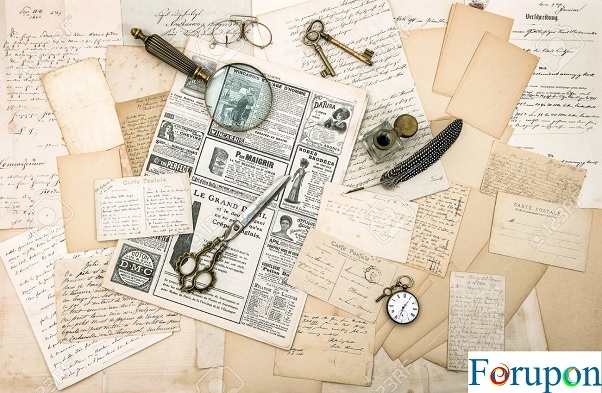







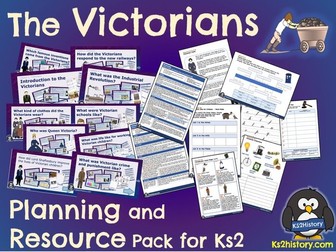

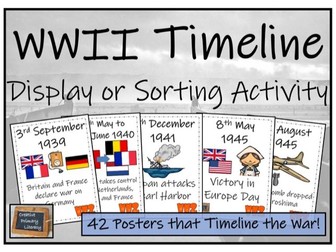







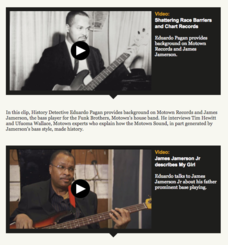
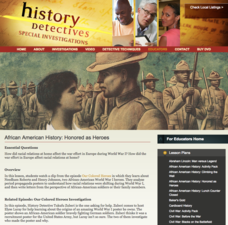






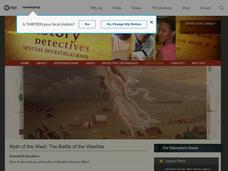
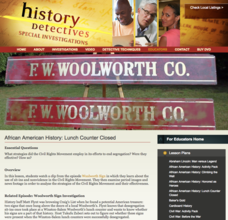





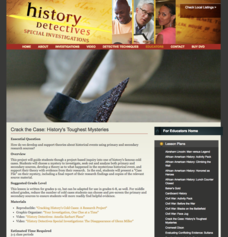

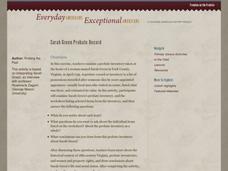












 Going Back In Time How to use old documents in your research.
Going Back In Time How to use old documents in your research.  Document This How to examine old documents.
Document This How to examine old documents.  Testing The Hypothesis
Testing The Hypothesis  Online Resources
Online Resources  Researching An Historical Site Essential guide on what to research before visiting a site.
Researching An Historical Site Essential guide on what to research before visiting a site.  Before We Travel, We Research How to prepare for a field trip.
Before We Travel, We Research How to prepare for a field trip.
Comments are closed.